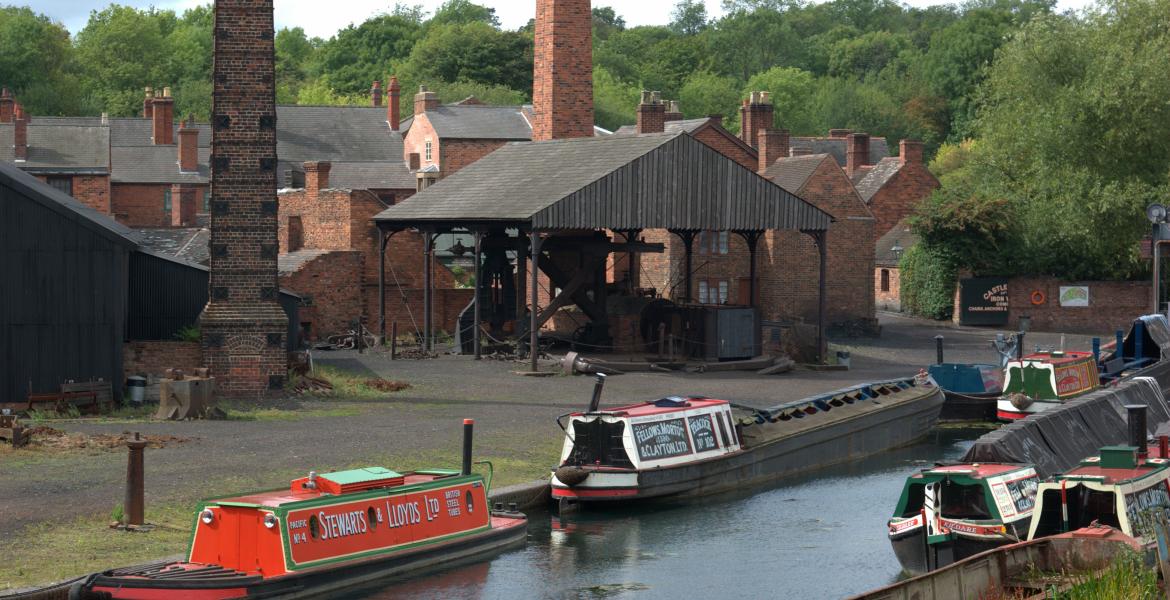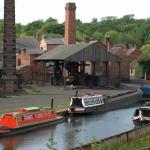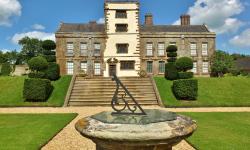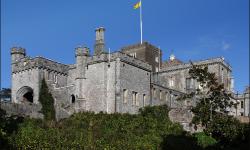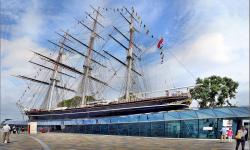The Black Country Living Museum, West Midlands
The area in the West Midlands around Dudley, Sandwell, and Walsall has been a centre of industry since the 1600s, and made weapons for the Royalists during the Civil Wars. As the Industrial Revolution sparked and caught, the importance of the area grew likewise, notably because of its rich seams of coal and iron ore. By the end of the 18th century it had become one of Britain's major industrial centres and, according to the Museum, 'the first industrial landscape anywhere in the world'. The level of industry had a profound effect on the local environment, with the area appearing 'black by day and red by night' Elihu Burritt, the American consul in Birmingham, 1862 thanks to the quantities of smoke and blazing furnaces. It is probably this pollution that gave the area its name: the Black Country.
Elihu Burritt, the American consul in Birmingham, 1862 thanks to the quantities of smoke and blazing furnaces. It is probably this pollution that gave the area its name: the Black Country. Some have even supposed it to be Tolkein's inspiration for Mordor in The Lord of the Rings. Others have suggested the name was due to the coal seams that in some places were exposed.
Some have even supposed it to be Tolkein's inspiration for Mordor in The Lord of the Rings. Others have suggested the name was due to the coal seams that in some places were exposed.
The Black Country remained an important area of industry until the second half of the 20th century, and was even responsible for the manufacture of Titanic's anchor and anchor chain. The last colliery closed in 1968 and many factories followed, leading to mass unemployment, poverty and social problems. Since then, it has witnessed some regeneration and steps have been taken to preserve its heritage.
The Black Country Living Museum is an important part of this process. Founded by the local council as a department within their museum, steps were taken in 1976 to display the collections in a more accessible and fitting context by creating an open-air museum. The new, independent museum opened in 1978, and has become the UK's third largest open-air museum, covering the history of the area from the 1850s to the 1950s. Set within 26 acres of land, it has a range of period buildings, shops and workshops, carefully transported to and reconstructed at the site, as well as working trams and buses, a 1930s fairground, its own mine shaft and a working replicaan exact copy of something.an exact copy of something.an exact copy of something. of Thomas Newcomen's 1712 steam engine. Demonstrations, shows (including Punch and Judy), talks, and tours are available throughout the day from knowledgeable staff in period costume. When the staff aren't busy with these, they are happy to chat and answer any questions visitors might throw at them. There was so much to do that on our visit we perhaps managed to see a quarter of what was on offer, and were thoroughly glad that the entrance ticket provides access for a full year at no extra cost.
Any visitor should make sure they allow extra money for use at the site. Most things to see and do are covered by the entry ticket price, although tokens need to be purchased for use at the fairground. However, many of the shops are open to sell items, from hats through to Victorian sweets and pastries. There is also an excellent mineral shop, which, if your interest runs to geologyThe science of studying the Earth and its past.The science of studying the Earth and its past.The science of studying the Earth and its past. or palaeontology, can tempt you to get out the credit card. There are plenty of food options available with two cafés, an inn selling traditional ales and a wide selection of gins and whiskeys, and an award-winning fish and chip shop. Considering it is a captive market, the food is very reasonably priced and of good quality.
Access is better than could be expected at an open air museum, although some attractions - such as the mine and houses with stairs - are of course restricted. Children must also be aged five or over to access the mine.However, at peak periods parking might be an issue: arriving around midday on a cold Easter Monday, we took the last space in the car-park. Arriving early, both to park and to see as much as possible, is therefore highly recommended. As the day of our visit was so cold, the museum perhaps attracted fewer visitors than might be expected during summer holidays or on bank holiday weekends. The museum was by no means too busy for us - the site is so large it could probably have held thousands more with no detriment - but it is possible that on a warm summer's day the number of visitors could spoil the experience. Weather is, of course, a determining factor in a visit to the museum. As it is open air, it is weather dependent, although there are places to hide in a downpour. This being said, as the day wore on I found myself moving as close as possible to fires and furnaces, and wishing for a pair of gloves.
Children must also be aged five or over to access the mine.However, at peak periods parking might be an issue: arriving around midday on a cold Easter Monday, we took the last space in the car-park. Arriving early, both to park and to see as much as possible, is therefore highly recommended. As the day of our visit was so cold, the museum perhaps attracted fewer visitors than might be expected during summer holidays or on bank holiday weekends. The museum was by no means too busy for us - the site is so large it could probably have held thousands more with no detriment - but it is possible that on a warm summer's day the number of visitors could spoil the experience. Weather is, of course, a determining factor in a visit to the museum. As it is open air, it is weather dependent, although there are places to hide in a downpour. This being said, as the day wore on I found myself moving as close as possible to fires and furnaces, and wishing for a pair of gloves.
In summary, the Black Country Living Museum is a great attraction for the whole family. Its staff are knowledgeable and friendly, its exhibits are interesting and the regular demonstrations make them more so, and it's worth a visit just for their fish and chips. With so much to see and do, the return ticket is both necessary and good value: we can't wait to return!
- Log in to post comments


